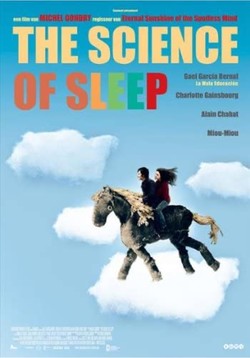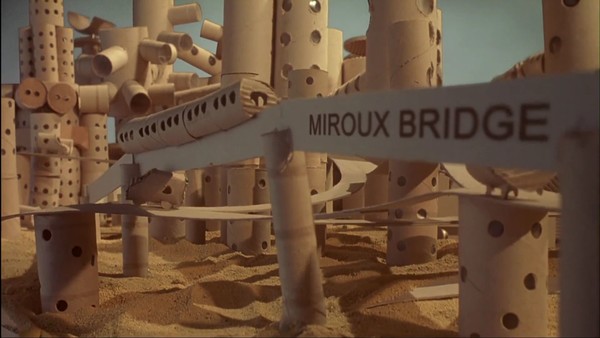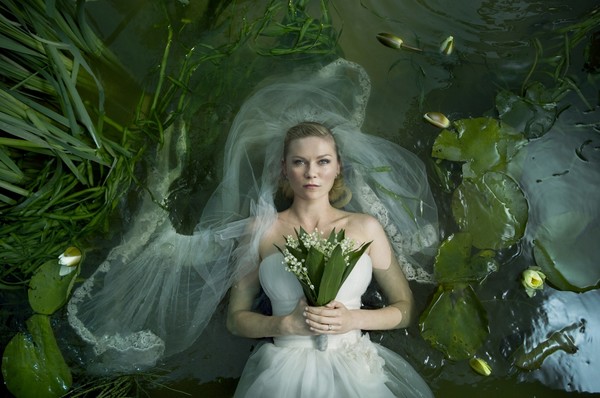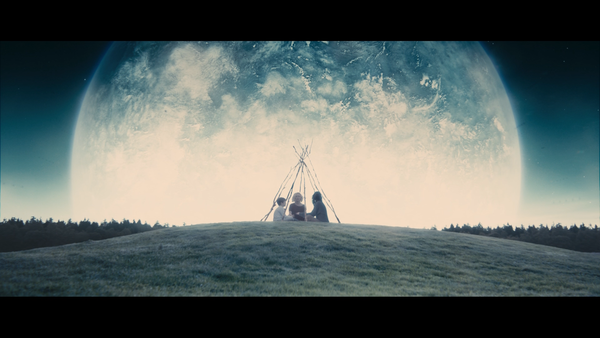Films that visually capture subconsciousness on screen
A CERTAIN creative mastery is required to translate the abstractness of the human subconscious into a tangible, visual form of art. Unlike fast-paced blockbuster movies, experimental films that seek to capture the more delicate poetry of the human condition—specifically, our mysterious psyche—oftentimes miss the attention they deserve. A unique aspect of such movies lies in how the directors push the creative limits of visual portrayal through meticulously refining the stylistic elements of their films. Unconventional cinematic choices like these enable the abstract, dreamlike states of the human subconscious to be encapsulated on-screen, allowing audiences to appreciate films not as simple entertainment, but as profound works of art.

The phantasmagoric imageries of The Science of Sleep
Directed by Michel Gondry, The Science of Sleep depicts the struggles of an eccentric man named Stephane Miroux, who is troubled by a peculiar condition where his fantasies overflow into the realm of consciousness. As the film revolves around Stephane’s point-of-view, its narrative, consequently, leaves the audience unsure as to where his imagination ends and the material world begins. Gondry depicts the ambiguity of this boundary by combining elements of reality and fantasy within the same frame, such as having episodes from Stephane’s dreams take place in a space grounded in the physical world, like his apartment.

While the bizarre nature of Stephane’s fantasies may bewilder some viewers, it is precisely this lack of logic that allows the film the creative freedom to accurately depict the absurdity of the human subconscious. In order to visually capture the surrealness of Stephane’s waking dreams[1], scenes from his imaginations were made to resemble a child’s art project, animated using stop-motion techniques to give his dreamscapes an awkward, artificial quality. For example, the “city” presented within Stephane’s dreams is not portrayed as being true to life; instead, it is created out of cardboard figures, with cars, clouds, and birds moving in an unnatural, glitchy manner. Such intentional lack of authenticity grants the film elements of uncanny accuracy in that it depicts dreams as unrefined imitations of reality, not as hyper-realistic recordings of an actual account. Narrated in an illogical fashion as to capture the incongruous nature of dreams, viewers will find themselves agreeing in awe with the film’s realistic portrayal of the phantasmagoric[2] world of imaginations.

Staring into forgotten memories in Eternal Sunshine of the Spotless Mind
Another great piece by Michel Gondry, Eternal Sunshine of the Spotless Mind is a science fiction film that draws the story of Joel Barish’s tumultuous romance with a mysterious woman named Clementine. Although Joel and Clementine’s relationship gets off to a great start, differences in their personality eventually drive them apart, leading the couple to each undergo a medical procedure where their memories of each other are erased from their minds.
The film acts as a stethoscope to Joel’s psyche: in showing Joel relive his memories with Clementine, it exposes to the viewers the thoughts, traumas, emotions, and imaginations that remain deeply entangled within his subconscious. Gondry masterfully captures aspects of Joel’s fading recollections by paying attention to the finest details—many of which are too subtle to notice at first glance. For example, as the amnesia-inducing procedure progresses, Joel’s memories start to lose their content, remaining only as vague outlines of what they were supposed to look like: people’s facial features are jumbled up or missing, and the titles of books lining the library slowly fade to nothing. Anyone who tried staring into half-forgotten recollections of their past would realize that memories are mere collages of incomplete puzzle pieces—a half-formed idea of the “real thing”—just like the subjects appearing in Joel’s reminiscences.
Because figures within Joel’s memories are not real-life entities but are only a “part of his imagination”[3], the way they are portrayed depends on the extent to which Joel remembers them. This becomes evident when he conjures up Clementine’s new lover, Patrick Wertz. As Joel has only seen Patrick for a brief moment, he cannot accurately place his name or face. The “Patrick” within Joel’s memories thus reflect this lack of detail, causing him to appear with inaccurate facial features or be referred to as “Pa-a-a-a-atrick, baby boy”—the nickname that Joel vaguely remembers Clementine calling Patrick by. Easter eggs such as these are aspects of Gondry’s cinematic ingenuity through which the film’s brilliance shines through.

The surreal apocalypse of Melancholia
As its title implies, Lars Von Trier’s Melancholia is a film depicting the psychological devastations of a depressive disorder. The movie’s protagonist, Justine, is a woman with a debilitating history of depression, whose condition suddenly takes a turn for the worse during the night of her wedding. Overwhelmed by the sudden, gut-wrenching realization that marriage would never be the answer to her emotional longing, Justine violently spirals into a bottomless pit. Meanwhile, news arrives that a planet named “Melancholia” has entered a collision course—appropriately dubbed the “dance of death”—with Earth. Despite the deadliness of its impact, Melancholia glows tranquilly in the sky as an innocent-looking planet, yet soundlessly creeping toward those who are staring up at it.

What this cosmic apocalypse symbolizes is, precisely, the devastating and destructive nature of Justine’s condition. Trier uses the imagery of a massive blue planet as a visual metaphor for the panic, despair, and anguish residing within Justine’s illness-stricken psyche. While Justine’s condition may appear to others as static, subdued, and even peaceful, the reality is that she has partaken in a “dance of death” and is hurtling toward her psychological demise at a dangerous but invisible speed. Majestic yet terrifyingly silent, planet Melancholia acts as a surreal parallel to the apocalyptic fate of Justine’s subconscious self.

[1] Waking dream: Dreams that occur involuntarily while the individual is still awake
[2] Phantasmagoric: To have a series of fantastical images, like those seen within a confused dream
[3] Eternal Sunshine of the Spotless Mind

